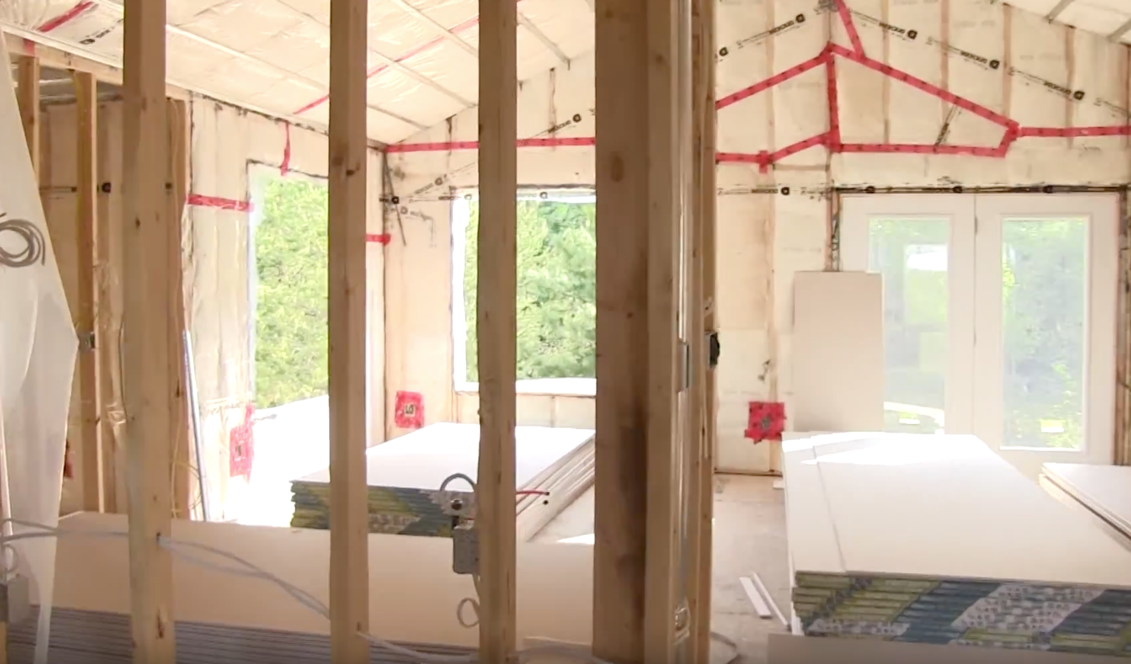WHAT IS A CONSTRUCTION DRAW SCHEDULE, AND WHY IS IT IMPORTANT?
In many custom projects the draw schedule governs when your builder will receive a certain sum of money, generally called a “draw”, at various stages during the project. The draw schedule is important because an accurate description of these milestones may promote your goal of making sure that the amount of money the builder has received is not significantly ahead of the progress of the work. For instance, if the builder has been paid 80% of the contract amount, but only 50% of the work has been completed, you may run into difficulties in having the builder complete your home in a timely and workmanlike manner.
Invest some time at the contract stage so that the language of the draw schedule is consistent with your goal of having your home completed in a timely and workmanlike manner. The following is a list of issues to look for in draw schedules.
• Avoid vague wording – some draw schedules will say “$100,000.00 at trim, or 10% at trim”, etc. A vaguely worded description such as this may allow the builder to prematurely draw money and may promote confusion and misunderstanding. For instance, what does “trim” mean? Does this mean that all of the cabinets, appliances, finish carpentry, flooring materials, etc. must be installed in order for the builder to receive this money, or alternatively, does it only mean that, for instance, the crown molding, baseboards, etc. have been installed? Does this description mean that the builder is entitled to receive this draw before any of the “trim” has started, or only after it is completed? The more detail that is provided regarding when a builder is entitled to receive a particular draw the less likely it is that money will be prematurely paid to the builder and should minimize misunderstandings, arguments, and confusion later.
• Avoid draw descriptions that have the phrase “at start” in them. Some schedules state, for instance, “$50,000.00 at tile start”. If the schedule states this the builder may demand a $50,000.00 payment before any tile has been installed, and in some instances, possibly before tile has even been ordered. Descriptions such may allow a builder to receive money before it is earned – from an owner’s perspective, you should pay when the subject work has been completed, not before any of the work has even started.
• Watch out for orders of draws, or descriptions, that doesn’t make sense. For instance, if a draw schedule states that a builder is entitled to receive, for example, $100,000.00 upon installation of insulation, and another $100,000.00 upon installation of sheetrock, this description may not make sense in relation to the project, since generally the installation of insulation and sheetrock are considered to be part of the same stage of construction.
• Watch out for front-end loaded draw schedules. Many draw schedules are significantly “front-end” loaded – typically the two largest draws come at the start of the project – the foundation and the framing draws. I have been involved in some lawsuits where the builder has received within two or three months of the inception of construction 60% to 70% of the entire contract amount. Again, a draw schedule that puts you in this position may result in your home not being completed in a timely manner, and the builder later unjustifiably asking for more money to complete it. A draw schedule that disperses money to the builder evenly throughout the project may result in making it more likely that your home will be completed in a timely manner, and may minimize the chance of the builder asking for money in an amount that exceeds the contract amount later.
• Watch out for builders that race ahead in the draw schedule in order to receive an additional draw when the work that is the subject of the prior draw has not been completed. While there are many good builders, sometimes unscrupulous builders will perform work related to the next draw when the work related to the prior draw has not yet been completed in an effort to receive additional draw money. Make sure that the builder completes all the work relative to the prior draw before the new draw is funded.
Many lenders have their own draw schedules that generally trigger the disbursement of money based upon percentages of completion. However, if you are not using third-party financing for your construction, or the lender allows the builder’s draw schedule to govern, the builder’s draw schedule may govern the disbursement of draws. Spending some time and effort up-front regarding the terms of the draw schedule should assist in minimizing some of the pitfalls that could occur later!
If you should have any questions, please feel free to contact The Bryan Woods Law Office today



